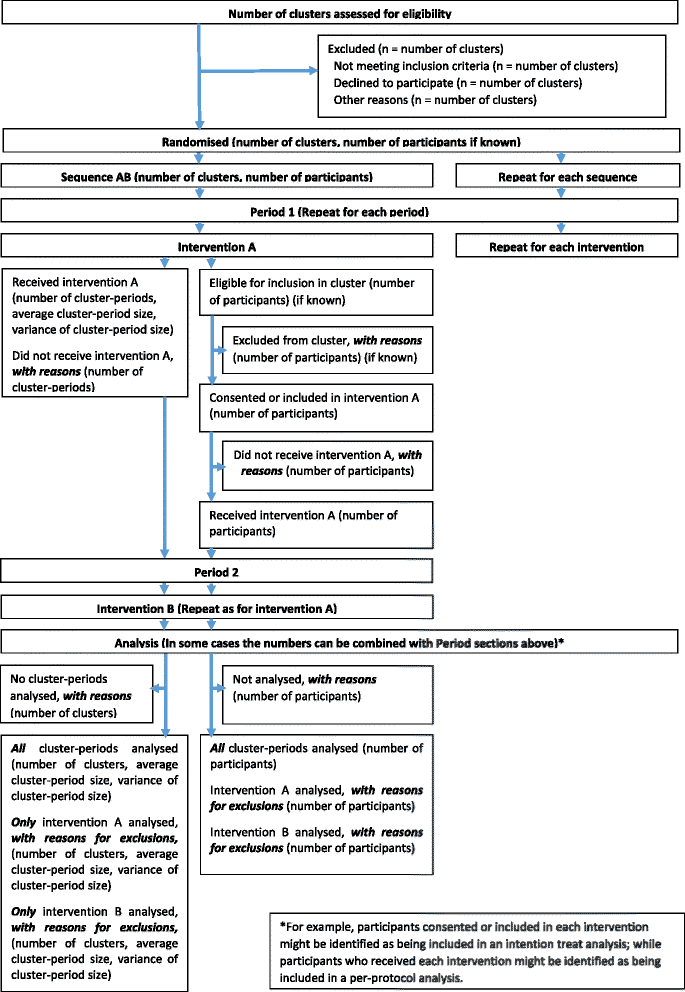The quality of reporting in cluster randomised crossover trials: proposal for reporting items and an assessment of reporting quality
- PMID: 27923384
- PMCID: PMC5142135
- DOI: 10.1186/s13063-016-1685-6
The quality of reporting in cluster randomised crossover trials: proposal for reporting items and an assessment of reporting quality
Abstract
Background: The cluster randomised crossover (CRXO) design is gaining popularity in trial settings where individual randomisation or parallel group cluster randomisation is not feasible or practical. Our aim is to stimulate discussion on the content of a reporting guideline for CRXO trials and to assess the reporting quality of published CRXO trials.
Methods: We undertook a systematic review of CRXO trials. Searches of MEDLINE, EMBASE, and CINAHL Plus as well as citation searches of CRXO methodological articles were conducted to December 2014. Reporting quality was assessed against both modified items from 2010 CONSORT and 2012 cluster trials extension and other proposed quality measures.
Results: Of the 3425 records identified through database searching, 83 trials met the inclusion criteria. Trials were infrequently identified as "cluster randomis(z)ed crossover" in title (n = 7, 8%) or abstract (n = 21, 25%), and a rationale for the design was infrequently provided (n = 20, 24%). Design parameters such as the number of clusters and number of periods were well reported. Discussion of carryover took place in only 17 trials (20%). Sample size methods were only reported in 58% (n = 48) of trials. A range of approaches were used to report baseline characteristics. The analysis method was not adequately reported in 23% (n = 19) of trials. The observed within-cluster within-period intracluster correlation and within-cluster between-period intracluster correlation for the primary outcome data were not reported in any trial. The potential for selection, performance, and detection bias could be evaluated in 30%, 81%, and 70% of trials, respectively.
Conclusions: There is a clear need to improve the quality of reporting in CRXO trials. Given the unique features of a CRXO trial, it is important to develop a CONSORT extension. Consensus amongst trialists on the content of such a guideline is essential.
Keywords: Cluster; Cluster randomised crossover trial; Crossover; Reporting quality.
Figures
References
-
- Rietbergen C, Moerbeek M. The design of cluster randomized crossover trials. J Educ Behav Stat. 2011;36(4):472–90. doi: 10.3102/1076998610379136. - DOI
Publication types
MeSH terms
LinkOut - more resources
Full Text Sources
Other Literature Sources
Miscellaneous



